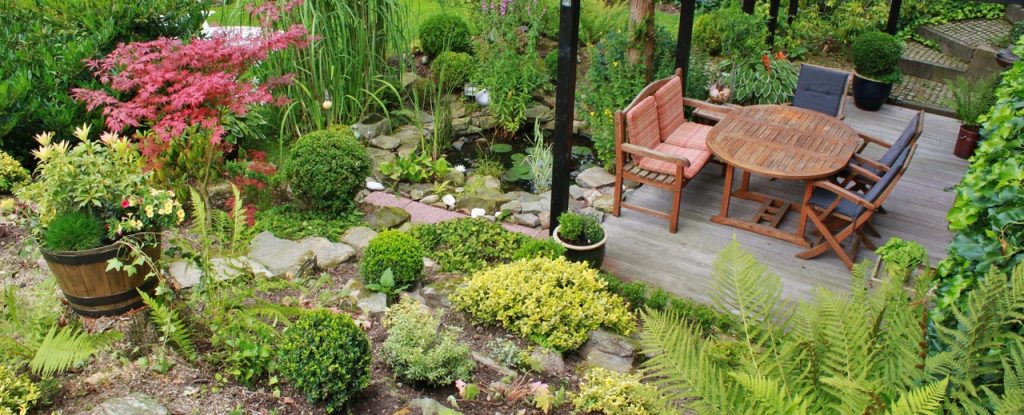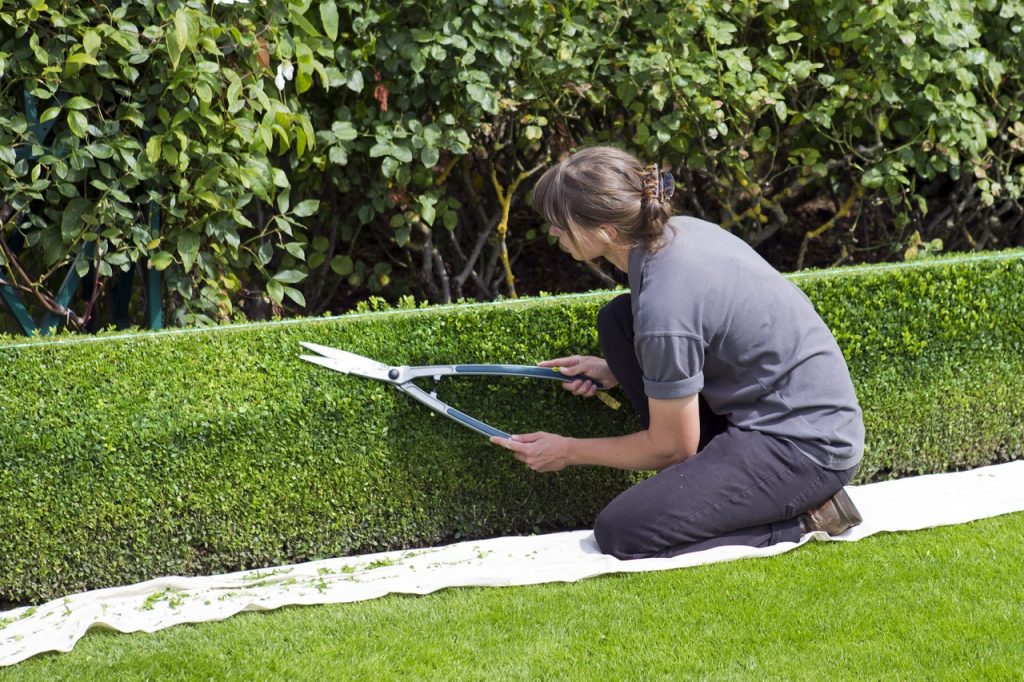If you’re designing a new outdoor living area or looking for inspiration to update your current one into an eco-friendly backyard sanctuary, by going green you can lessen your homes’ environmental impact, save money over and over again, and limit the harmful materials to which your family and pets are exposed. As you make your progress, you’ll soon realize that going green doesn’t have to compromise on visual appeal, function, or your personal style. Just how green you want to go is totally up to you.
Design your outdoor room

Whether a simple patio with a playground and vegetable garden is what you’re after, or you want to splurge on an expansive deck for outdoor parties with cooking and alfresco dining, first you need to lay out a plan for your space. Choosing lighting fixtures and furniture textile might be the fun part, but now you have to decide on must-have features, such as a built-in grill or pizza oven, electrical wiring, plumbing, etc. Also, you need to consider whether you’ll do everything yourself or need professional help in some stages.
Set the stage
Second, you need to select hardscape and ground covers that reduce your energy and water consumption. This often includes designing a patio, pool deck, and walkways made with durable, low-maintenance paving stones that are easily cleaned or replaced if damaged. These pavers also provide an excellent slip-resistant surface, so they’re often used as a sustainable poolside ground cover. If saving water is what you’re after you can go two ways. Either install artificial turf which doesn’t require watering and trimming at all or use some of the xeriscaping techniques, which are increasingly popular in arid areas, such as parts of Australia or the south-western US.

Give the advantage to green materials
If you plan to add a wooden deck, considering recycled or reclaimed wood from other buildings. Local lumber yards often have a list of suppliers who can provide a great choice of reclaimed or recycled timber which is excellent for eco-savvy outdoor home projects. In addition, even concrete, wrought iron, and railroad ties are becoming increasingly popular materials for low-carbon outdoor projects. You’ll get surprised how much charm and character can you give your garden by using unique repurposed materials.
Use energy-efficient outdoor lighting
Outdoor lighting has three main purposes: to illuminate the conversation area, guide people to your patio, and highlight interesting landscape features. Such an arrangement irresistibly reminds of interior lighting solutions, but that shouldn’t be surprising, as people in favorable climates, such as Australian, enjoy being outdoors for the biggest part of the year, literally substituting indoor living for fresh air. However, when it comes to outdoor lighting, even DIY-obsessed Aussies would rather call an experienced electrician in Sydney than dabble with the wiring. Still, there’s something about lighting you can still DIY – purchase a few solar path lights at your garden center and stick them in the ground along the walkway or between flowering plants.
Consider green outdoor cooking
If your idea of outdoor living includes entertaining friends, you’ll definitely want to include a small kitchen or a barbecue grill in your outdoor room design. However, you need to make sure the grill you choose is safe for all the people sitting around. While commercial grill charcoal is generally not considered an eco-friendly choice, you can still use natural lump charcoal, which is made from processed wood and gives off a nice smoky flavor that only fires up your appetite. Alternatively, you can consider a grill that uses corn kernels as fuel, which is definitely a greener choice.
Select sustainable patio furniture
When shopping for eco-friendly outdoor furniture, look for products which are made to last, as well as those made from recycled or sustainable materials. For example, teak and eucalyptus are popular options, as they can really boost up the aesthetics of your outdoor area. Teak has a bit steeper price, but it’s durability and beautiful aging are now almost legendary. However, apart from strength and durability, you need to make sure that the materials or products you choose have an independent certification that the wood was grown in an environmentally-friendly way and harvested sustainably.
Go natural with maintenance

Apart from using recycled materials, you should keep recycling an ongoing process in your backyard. Make sure there are recycling receptacles readily available for cans and bottles and consider using water pitchers instead of PET water bottles. Instead of chemical-heavy cleaners consider all-natural products, which are now available in every garden center. If you have luscious greenery around your home, install reclaimed water drainage that collects the rain runoff from your roof, and stores it for watering your lawn and landscaping.
Lowering your outdoor area’s environmental impact doesn’t mean installing arrays of solar panels, replacing all the turf with gravel, and never turning on your garden hose again. There are eco-friendly ways of making your outdoor space comfortable for your family to enjoy the sun and fresh air all year round.
About the author: Mike Johnston is a lifestyle blogger and DIY enthusiast from Sydney. He is a regular writer at Smooth Decorator and Divine magazine. His articles can also be found on numerous family-friendly, real estate and green living blogs. Mike’s goal is to create and share meaningful content that helps and inspires people.
